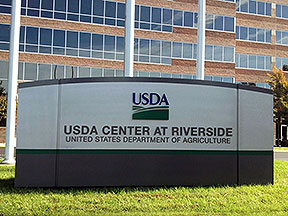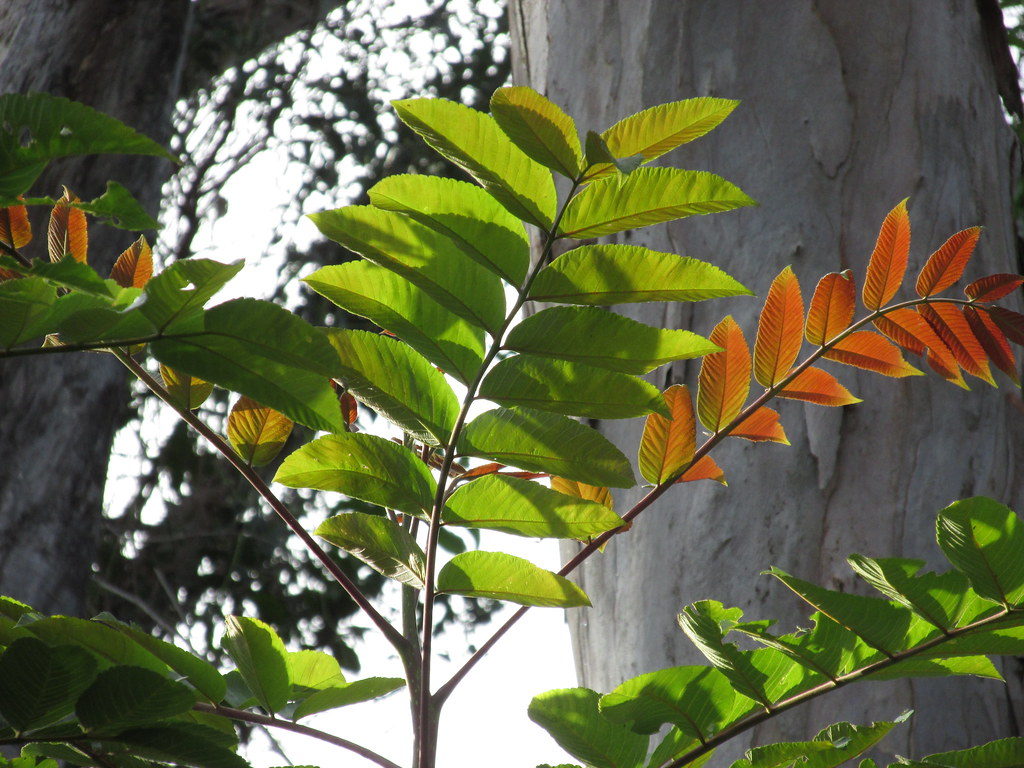
photo by Scott Cameron
In August I posted a blog summarizing information on pest introductions and impacts gleaned over my nearly 30 years of engagement. Already, I need to post an update, with an alarming estimate of introduced pests’ impacts across the continent.
Fei et al. 2019 (see the full citation is at the end of this blog) estimate that the 15 most damaging introduced species threaten 41.1% of the total live forest biomass in the 48 conterminous states.
In fact, this might be an underestimate of the pests’ impacts on biomass loss. Fei et al. (2019) note several limitations in their data that might result in such an underestimate. These include:
1) Mortality rates – and impacts – may increase over several decades following the initial invasion.
2) For pests already established throughout nearly all their potential ranges, pest-induced biomass loss could be substantially underestimated because most of their hosts died long ago, before the FIA data began to be collected. Consequently, the actual loss of these tree species from the forest is much greater than has been measured by the study’s methods.
3) Mortality rates vary among species and regions, which might introduce errors. They cite European gypsy moth, in which relatively small areas of heightened mortality due to repeated defoliations are swamped by lower mortality rates across the chosen measurement area.
4) They considered only tree mortality, not crown or root dieback or reductions in tree growth.
5) They did not estimate carbon release to the forest floor as a result of defoliation.
6) Pest-related mortality rates may be underestimated due to salvage – although the authors did not observe evidence of substantial salvage efforts for most of these pests.
7) The data did not include losses from urban tree mortality.
Fei et al. estimate that more than 450 pests are established in the 48 conterminous states. This study excluded pests attacking palms; trees on U.S. Pacific and Caribbean islands; and pests native to portions of North America that are causing severe damage in naïve hosts – e.g., goldspotted oak borer. I did include the latter groups in my slightly larger estimate laid out in my August blog.
Fei et al. base their analysis on 83 of the introduced pest species considered to cause substantial effects on tree health and productivity and sometimes extensive tree mortality. (In my August blog, I described findings by another study by Guo et al (2019) that counted 91 species in that category.)
Fei et al. build on studies by a group of USDA Forest Service (USFS) scientists that I described in an earlier blog.
This team found that, nation-wide, non-native forest pests are causing an approximate 5% increase in total annual mortality by tree volume. They based their studies on analysis of 92,978 long-term plots maintained by the USDA Forest Inventory and Analysis program.
As noted above, the article cannot capture the full range of mortality in species affected by pests introduced decades ago. Chestnut blight, white pine blister rust, Port-Orford-Cedar root disease, beech bark disease, butternut canker, dogwood anthracnose, and European gypsy moths had all killed millions of trees before the USFS forest inventory plots were established. Fei et al. do form a solid basis for measuring some of the current impacts and projecting future ones.
The focus of the new article is on the amount of carbon being transferred from live biomass to dead organic matter as a result of the increased mortality caused by the 15 species with the highest impacts. This is arguably a more quantifiable measure of pests’ impacts than others’ approaches. Here, I focus more narrowly on the documentation of exacerbated mortality as measured by the loss of biomass. Added together, these 15 species have caused an additional (i.e., above background levels) tree mortality rate of 5.53 TgC per year [defined as terragrams of carbon]. This estimate of annual conversion of live biomass to dead wood is similar in magnitude to that attributed to fire (5.4 to 14.2 TgC per year) (Fei et al. 2019). Yet the fire threat gets much more attention – for both prevention and management.
It is important to remember that conversion of living biomass to dead wood does not result in an immediate release of carbon to the atmosphere. Atmospheric releases take place through decomposition which is both gradual and takes place at varying rates. Some of the carbon will remain in the soil. And, over time, some of the carbon storage capacity will be restored by compensatory growth in unaffected trees and the recruitment of new regeneration – although this faster growth is delayed by as much as two or more decades after pest invasions begin (Fei et al. 2019).

photo by Cheryl Kaiser, University of Kentucky; bugwood.org
The 15 species of introduced pests used in this analysis are laurel wilt disease, chestnut blight, butternut canker, dogwood anthracnose, emerald ash borer (EAB), Dutch elm disease, red pine scale, beech bark disease, hemlock woolly adelgid, balsam woolly adelgid, European gypsy moth, white pine blister rust, green spruce aphid, sudden oak death, and Port-Orford cedar root disease. Of these, the highest elevation in biomass loss – as measured by FIA plot data – was caused by EAB, Dutch elm disease, beech bark disease, and hemlock woolly adelgid. We know that elms and beech, at least, began dying decades before the FIA data began to be collected. So the reported mortality rates are an underestimate. This is especially true because beech mortality is highest in the first decade after invasion by beech bark disease.
Annual levels of biomass loss are virtually certain to increase. First, pests will spread to new host ranges and infestations in already-invaded ranges will intensify. As a result, substantial amounts of the hosts’ biomass are at risk of exacerbated mortality. As I noted at the top of the blog, the total amount of host biomass at risk from these 15 species is estimated to be 5,197 TgC – or 41.1% of the total live forest biomass in the 48 conterminous states. Further exacerbating future losses is the likelihood that additional pests will be introduced. I would add that pests not included in this analysis – e.g., polyphagous and Kuroshio shot hole borers and possibly the spotted lanternfly – are also likely to contribute to losses of live forest biomass.
Fei et al. (2019) did not attempt to determine the economic value of this biomass loss or to address other types of losses to ecosystem services.
Remember that a separate set of studies reported by Potter et al. (2019) (the CAPTURE project) also relied on data from the FIA plots to evaluate the impact of introduced pests. These studies focused on identifying the host species at greatest risk rather than highest-impact pests or biomass loss. I find it reassuring that the Fei and Potter studies – using different approaches – resulted in very similar species rankings. See my discussion of the Potter studies here.
Together, the teams led by Potter and Fei set clear priorities for addressing the threats from non-native pests. What we need now is action! See my recommendations in my recent “solutions” blog.

SOURCES
Fei, S., R.S. Morin, C.M. Oswalt, and A.M. 2019. Biomass losses resulting from insect and disease invasions in United States forests
Potter, K.M., M.E. Escanferla, R.M. Jetton, and G. Man. 2019a. Important Insect and Disease Threats to United States Tree Species and Geographic Patterns of Their Potential Impacts. Forests. 2019 10 304.
Potter, K.M., M.E. Escanferla, R.M. Jetton, G. Man, and B.S. Crane. 2019b. Prioritizing the conservation needs of United States tree species: Evaluating vulnerability to forest insect and disease threats. Global Ecology and Conservation. (2019)



